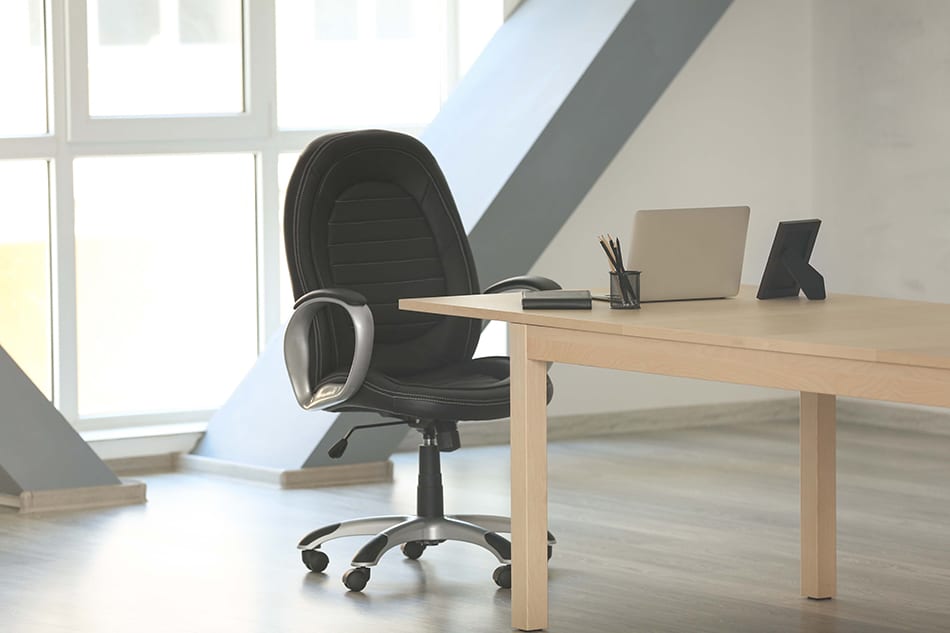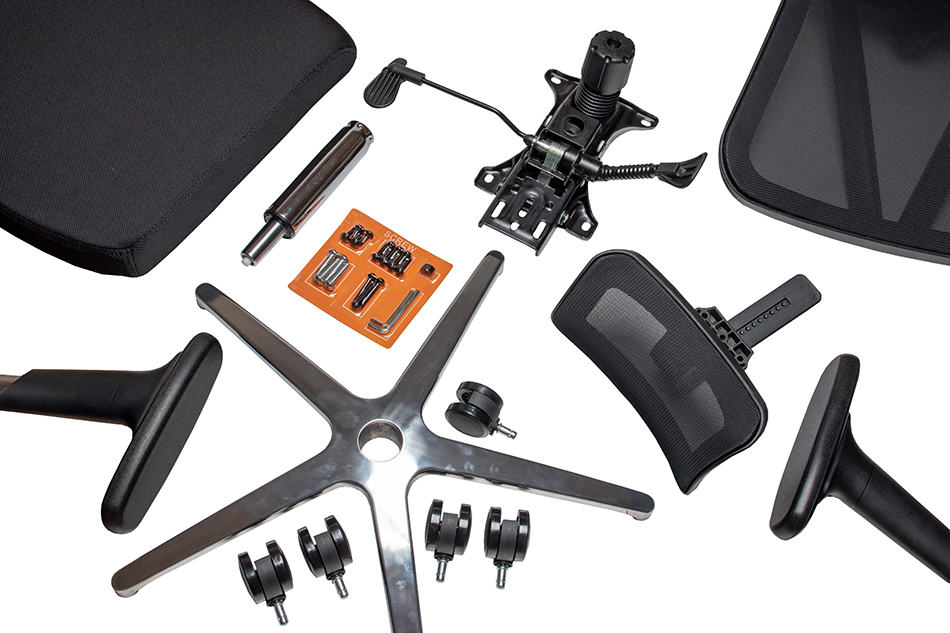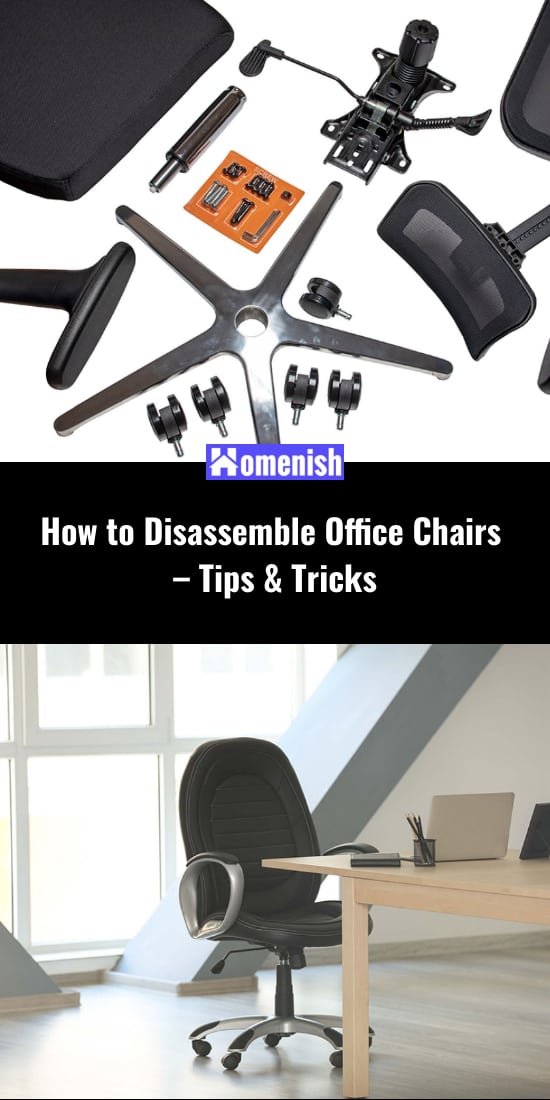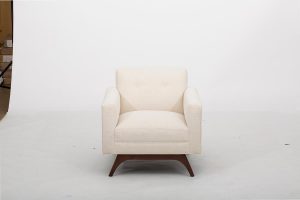There might be several reasons why you have to disassemble an office chair. Perhaps you need to oil its parts. Keeping metal parts lubricated on a regular basis prevents the buildup of rust. Another reason could be to check whether the metal parts are all tightly screwed to prevent squeaking. Perhaps you want to make some minor adjustments to better suit your comfort. Or it could be that you have to move to another office, and fitting a large, bulky chair into a vehicle can be a challenge.
Whatever your reason is for disassembling an office chair, there are a few considerations, tips, and tricks that you have to keep in mind. This article will talk you through the different steps of disassembling office chairs.
Parts of an Office Chair
If you want to successfully disassemble an office chair, it is a must that you know the different parts of the chair and be familiar with their characteristics.
An office chair has three major parts: the chair, the arms, and the base. The chair part is made up of the headrest, back, and seat. The arms portion consists of a base, padding, and any adjustment-related controls. Finally, the base part is the most complicated one. This part provides stability to the chair. Most office chairs have a 5-point base. Usually, the bigger the diameter, the more stability it gives.
Let us break down these parts a bit more.
Arms. There are different types of arms available for office chairs. These are:
- T arms – These arms can either be fixed or adjustable. The adjustable option can be set according to the user’s height, matching the elbow height as well.
- Flip arms – This type of arms can be flipped up and out to allow the user to conveniently get in and out of the chair.
- Loop arms – This type of arms is fixed and cannot be adjusted.
Arm pads. Arm pads are designed to provide support to the user’s arms for extra comfort. These are durable and usually enhance the total look of the chair.
Casters. These are the pivoting rollers attached to the bottom of the office chair, allowing it to move easily. They are often called the chair’s wheels, although the wheels are just a part of the caster’s components. A caster is composed of a wheel within a mounted frame. Casters can be made of soft rubber, plastic, nylon, or metal.
Chair base. As discussed above, the base provides stability to the chair. Bases can be made from different materials like polypropylene (ideal for light to medium use), aluminum (lightweight but strong), and steel (the most durable option).
Chair cylinder. This is also referred to as the gas lift. This part is located between the seat and the base. This part allows the user to adjust the height of the chair for more comfortable sitting.
Foot ring. Some office chairs have foot rings, the circular metal base often located on drafting stools. These parts provide extra foot support and balance for the user.
Seat Pad. This is the part that is sat on and provides a cushioned support. This part can be adjusted so that the user’s feet can touch the floor and knees can be bent at 90 degrees. Essentially, this part should match the width of the user’s hips and the depths of their thighs.
Headrest. Some office chairs are equipped with headrests to provide support to the user’s neck and head.
Steps to Disassemble Office Chairs
Disassembling an office chair takes more steps than meets the eye. If you are doing it for the first time, here is a walkthrough to help you get on with the task.
Dismantle the casters first to reduce the chair’s mobility
Detaching the wheels of your office chair prevents it from sliding and moving around when you try to dismantle its parts.
To do this, you will need:
- A pry bar
- A screwdriver
Procedure:
- Turn your chair upside down or sideways to have access to the wheels.
- With one hand, hold the leg of the chair and use your other hand to hold the caster.
- Pull out the caster using a pry bar. Position the nail pulling tip of the pry bar between the caster and the chair leg, then push the pry bar downwards to pull out the caster wheel.
- Repeat the same procedure to remove all the wheels.
Remove the star-base
For this procedure, you will need:
- a hammer
- 2 x 4 piece of wood
Procedure:
- With the office chair still upside down, ask someone else to hold down the five-star base so you can position the piece of wood on top of the gas lift.
- Using a hammer, hit the side of the wood to avoid causing any damage to the gas lift. Do not hit any part of the gas lift directly.
- Keep hammering the wood until the five-star base will eventually be removed, and the bottom bit will come apart.
Disassemble the armrest
The next step is to remove the armrests. Doing this means you are eliminating the secondary structure so that nothing will be blocking your way. It is very important to first check if the armrests are removable to avoid doing any damage to the chair. A number of office chairs have removable armrests built into their structure. If this is true to your chair, you have to check how they are attached to the chair.
For this step, you may need:
Procedure:
- Start by removing the bolts from the chair using a screwdriver or an Allen wrench.
- Remove the plates.
- Place all pieces you removed in a bag or box, and keep it with the chair.
- Pull the armrests out of the chair’s slot.
(These steps may vary depending on the kind of armrests installed in your chair.)
Unscrew the fixtures to separate the seat from the backrest
At this stage, you should just be left with your chair’s seat pan, backrest, and metal cylinder. Detach the seat first before removing the rest of the parts.
For this step, you will need:
- Allen wrench or screwdriver
Procedure:
- Begin by unbolting or unscrewing the fixtures that connect the seat pan to the backrest.
- Gently separate the two parts.
- If your office chair is made of a single unit structure, all you have to do is separate the whole framework from the star-base. If your chair is attached to hydraulics (used to raise and adjust the chair), check for any screws or bolts under the seat pan. Then, undo them and detach the seat from the rest of the unit.
Removing a Gas Lift Cylinder from an Office Chair
Some office chairs use a gas lift cylinder instead of hydraulics. If your chair contains a gas lift cylinder, removing it is pretty much straightforward. To do this, you will need:
- Rubber mallet
- Screwdriver
- Adjustable wrench
Procedure:
- With your chair in an upside-down position, use the adjustable wrench to take off the four bolts that link the mechanism under it to the chair. When all the bolts are removed, take off the upper part of your chair and put it aside.
- Then, separate the base from the cylinder. You can do this by holding the cylinder upright with one hand and hitting the base downward with a rubber mallet. Hit the mallet close to the cylinder.
- Once the base is removed, you can then release the mechanism from the inside of the cylinder. Do the same procedure for the mechanism as you did when taking the bottom off. Hold the cylinder down and use the rubber mallet to hit the mechanism downward until it is removed.
- In case the mechanism does not come out of the cylinder after doing the steps above, apply some heat and then gently hit it with a rubber mallet. You can apply heat by holding it over a stovetop or candle. Be extra cautious in doing this.
Tips to Remember When Disassembling Office Chairs
- Remember how the chair originally looks like before disassembling it. Some office chairs have multiple pieces and reassembling it might be a nightmare if you cannot remember how the chair came.
- Do not disassemble what is unnecessary. You can save time if you only remove the parts that need to be removed. Think about why you need to disassemble your office chair. If you just need it to fit in your car for moving or transporting it, just disassemble it so that it would fit in your car’s space.
- As much as possible, do not disassemble parts that are inside the mechanism.
- Put all the small parts safely in a sealed bag and keep it secure. You would not want to end up losing important small components.
- Protect the floor where you disassemble the chair on. Use old cardboard, a plastic cover, or a blanket to protect your surfaces.
- If you find it difficult to disassemble the chair, always refer to the manual.








